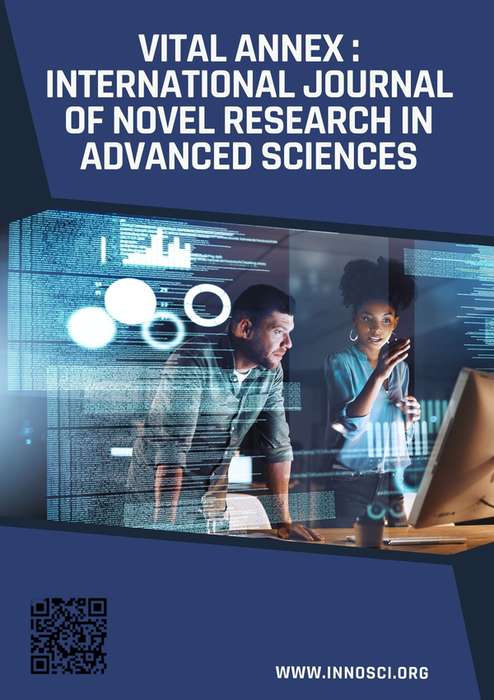Machine Learning Models for Traffic Congestion Prediction in Urban Smart Mobility Systems
Keywords:
Traffic Overcrowding Prediction, Machine Learning, Smart Mobility, Urban Transportation, LSTM Networks, Gradient Boosting, Real-Time Forecasting, Intelligent Transportation Systems (ITS), Spatiotemporal Data, Smart CitiesAbstract
Urban traffic congestion poses significant challenges to sustainable mobility, economic productivity, and environmental quality in modern cities. With the increasing deployment of Internet of Things (IoT) devices and real-time data collection systems, smart cities are generating vast volumes of traffic-related data that can be harnessed for predictive analytics. This study carefully looks at how machine learning models are used to accurately predict traffic jams in smart city transportation systems. We check and compare how well different supervised learning models work, like random forest networks, support vector regression, gradient boosting machines, and long short-term memory, using real traffic data from sensors, GPS devices, and city infrastructure. The process involves cleaning up data, creating features, training models, and adjusting settings to get the best prediction results. The tests showed that LSTM networks, because they can understand patterns over time, are better than traditional machine learning at predicting traffic jams, with a root mean squared error of 5.40 and a mean absolute percentage error of 9.7%. However, tree-based models like GBM are good for providing clear and efficient explanations, along with good accuracy, making them useful in smart city environments with limited resources. This research paper discusses the importance of understanding how the model works, choosing the right features, and the effects of adding machine learning-based prediction tools to city traffic management systems. The findings support the idea that machine learning can greatly improve real-time traffic monitoring, allowing for quick action to reduce its effects and improve smart city transportation.
References
[1] INRIX, INRIX Global Traffic Scorecard, 2022 [Online]. Available: https://inrix.com
[2] D. Schrank, B. Eisele, T. Lomax, and J. Bak, 2021 Urban Mobility Report. Texas A&M Transportation Institute, 2021.
[3] Y. Wang and M. Papageorgiou, “Real-time freeway traffic state estimation based on extended Kalman filter: A general approach,” Transp. Res. Part B Methodol., vol. 39, no. 2, pp. 141–167, 2005.
[4] A. Zanella, N. Bui, A. Castellani, L. Vangelista, and M. Zorzi, “Internet of Things for smart cities,” IEEE Internet Things J., vol. 1, no. 1, pp. 22–32, 2014.
[5] L. U. Khan, I. Yaqoob, N. H. Tran, and C. S. Hong, “Edge-intelligence-based autonomous vehicles: Challenges and future directions,” IEEE Commun. Mag., vol. 59, no. 10, pp. 28–34, 2021.
[6] W. Shi, J. Cao, Q. Zhang, Y. Li, and L. Xu, “Edge computing: Vision and challenges,” IEEE Internet Things J., vol. 3, no. 5, pp. 637–646, 2016.
[7] E. I. Vlahogianni, M. G. Karlaftis, and J. C. Golias, “Short-term traffic forecasting: Where we are and where we’re going,” Transp. Res. Part C Emerg. Technol., vol. 43, pp. 3–19, 2014.
[8] N. G. Polson and V. O. Sokolov, “Deep learning for short-term traffic flow prediction,” Transp. Res. Part C Emerg. Technol., vol. 79, pp. 1–17, 2017.
[9] M. S. Ahmed and A. R. Cook, “Analysis of freeway traffic time-series data by using Box-Jenkins techniques,” Transp. Res. Rec., no. 722, pp. 1–9, 1979.
[10] C.-H. Wu, J.-M. Ho, and D. T. Lee, “Travel-time prediction with support vector regression,” IEEE Trans. Intell. Transp. Syst., vol. 5, no. 4, pp. 276–281, 2004.
[11] Y. Zhang and A. Haghani, “A gradient boosting method to improve travel time prediction,” Transp. Res. Part C Emerg. Technol., vol. 58, pp. 308–324, 2015.
[12] Z. Yang, M. Li, S. Li, and L. Wang, “A hybrid machine learning model for short-term traffic congestion prediction,” IEEE Access, vol. 8, pp. 129685–129695, 2020.
[13] X. Ma, Z. Tao, Y. Wang, H. Yu, and Y. Wang, “Long short-term memory neural network for traffic speed prediction using remote microwave sensor data,” Transp. Res. Part C Emerg. Technol., vol. 54, pp. 187–197, 2015.
[14] Y. Li, R. Yu, C. Shahabi, and Y. Liu, “Diffusion convolutional recurrent neural network: Data-driven traffic forecasting,” in Proc. Int. Conf. Learn. Representations (ICLR), 2018.
[15] J. Zhang, Y. Zheng, and D. Qi, “Deep spatio-temporal residual networks for citywide crowd flows prediction,” in Proc. AAAI Conf. Artif. Intell., 2017.
[16] M. Abedi, H. Abolhasani, and M. Bahrami, “Real-time traffic prediction using neural networks and adaptive control systems,” Sci. Rep., vol. 15, no. 1, pp. 1–13, 2025. [Online]. Available: https://www.nature.com/articles/s41598-025-00762-4
[17] Y. Wang, J. Chen, and L. Zhou, “Explainable traffic flow prediction using large language models,” Eng. Appl. Artif. Intell., vol. 129, p. 107686, 2024. [Online]. Available: https://www.sciencedirect.com/science/article/pii/S2772424724000337
[18] S. Roy and A. Das, “Machine learning-based adaptive traffic prediction and control using real-time datasets,” Sci. Rep., vol. 15, 2025. [Online]. Available: https://www.nature.com/articles/s41598-025-00762-4
[19] R. Liu, X. Zhang, and C. He, “A review of machine learning-based traffic flow prediction models,” Digit. Transp. Saf., vol. 2, no. 3, pp. 110–124, 2023. [Online]. Available: https://maxapress.com/article/doi/10.48130/DTS-2023-0013
[20] F. Al-Kabbani and K. Nguyen, “Traffic congestion prediction: A review of state-of-the-art methods and future directions,” Smart Cities, vol. 8, no. 1, pp. 325–342, 2024. [Online]. Available: https://www.mdpi.com/2624-6511/8/1/25
Downloads
Published
How to Cite
Issue
Section
License
Copyright (c) 2025 Muthana Naser Hussein

This work is licensed under a Creative Commons Attribution 4.0 International License.



